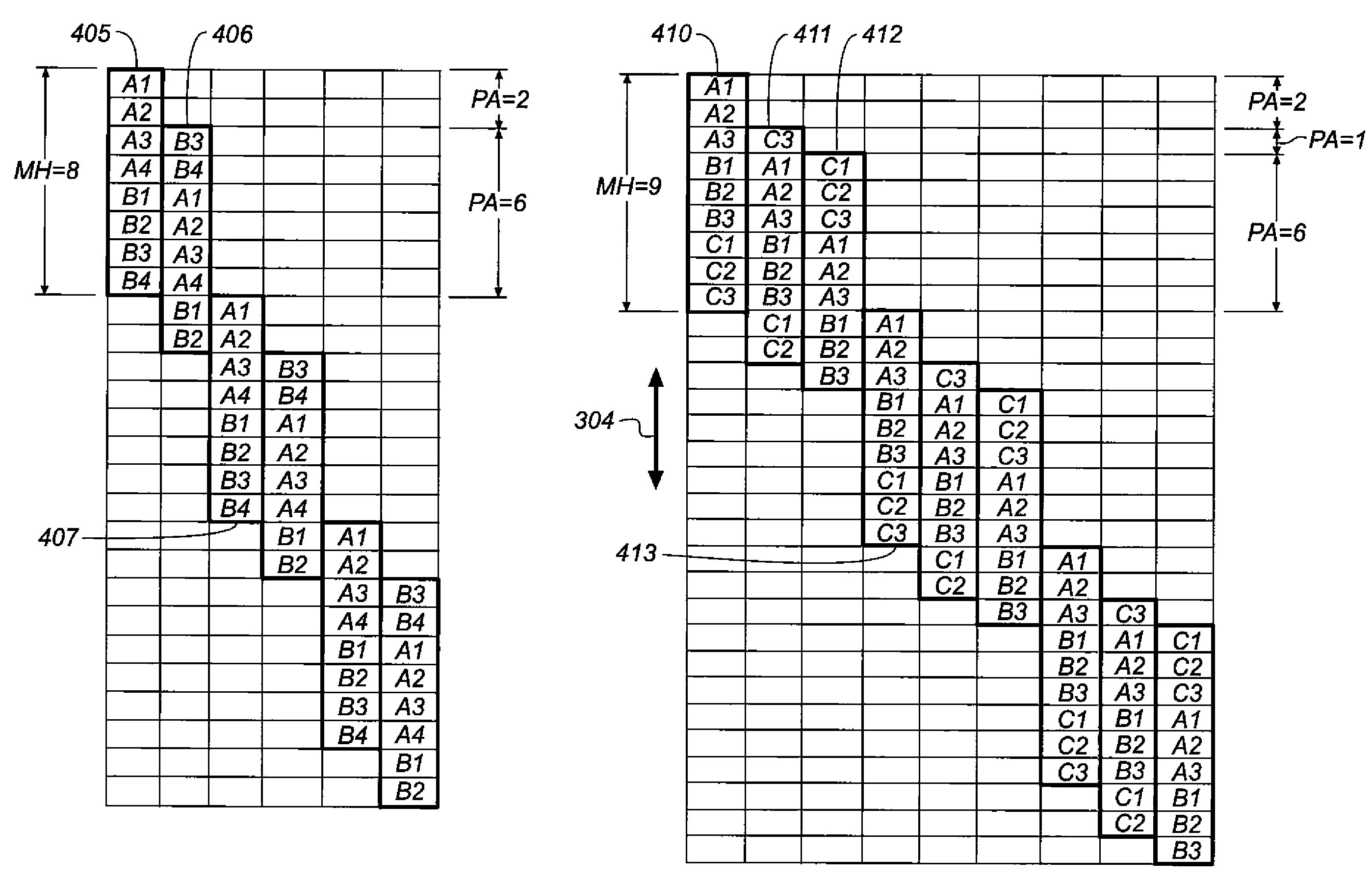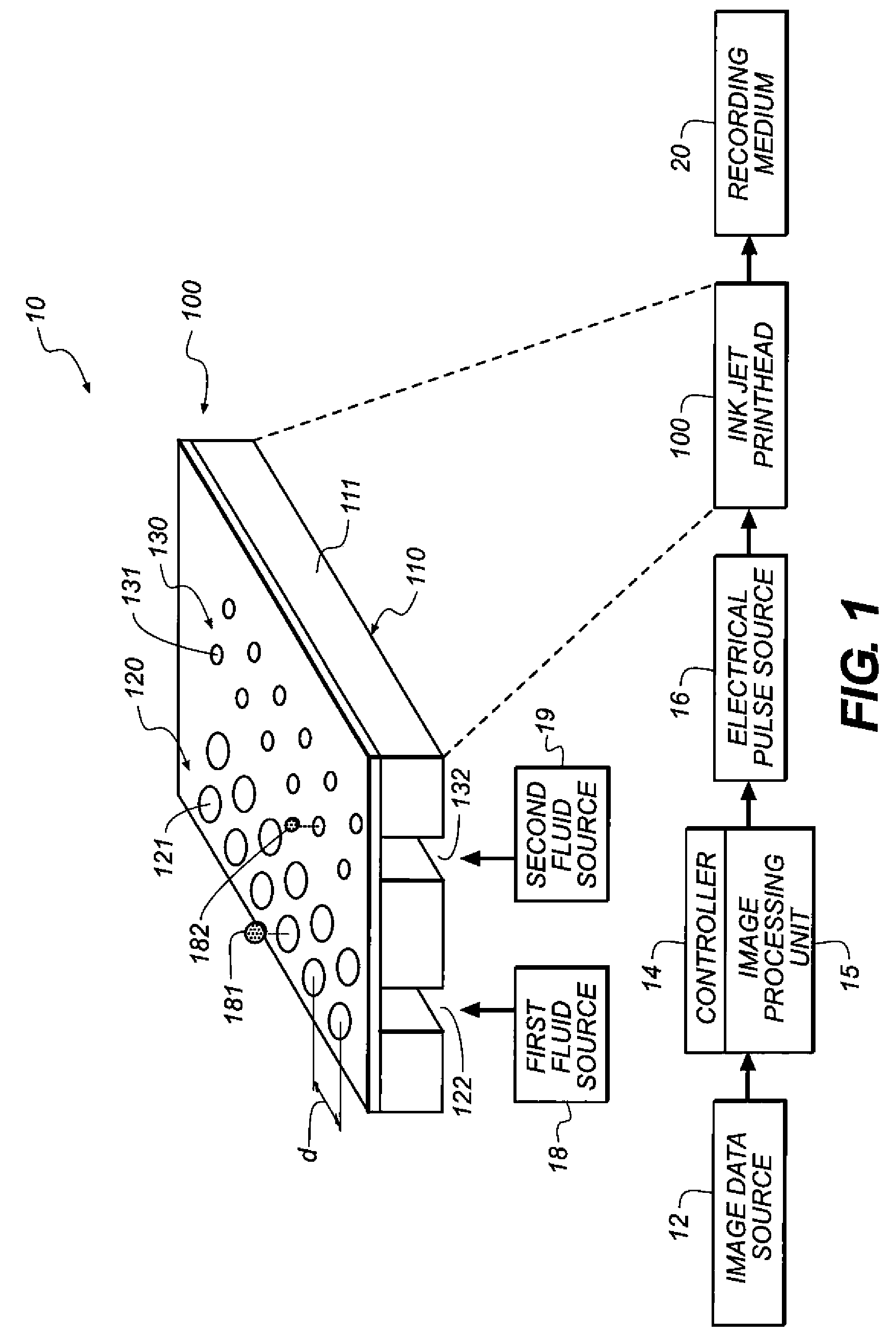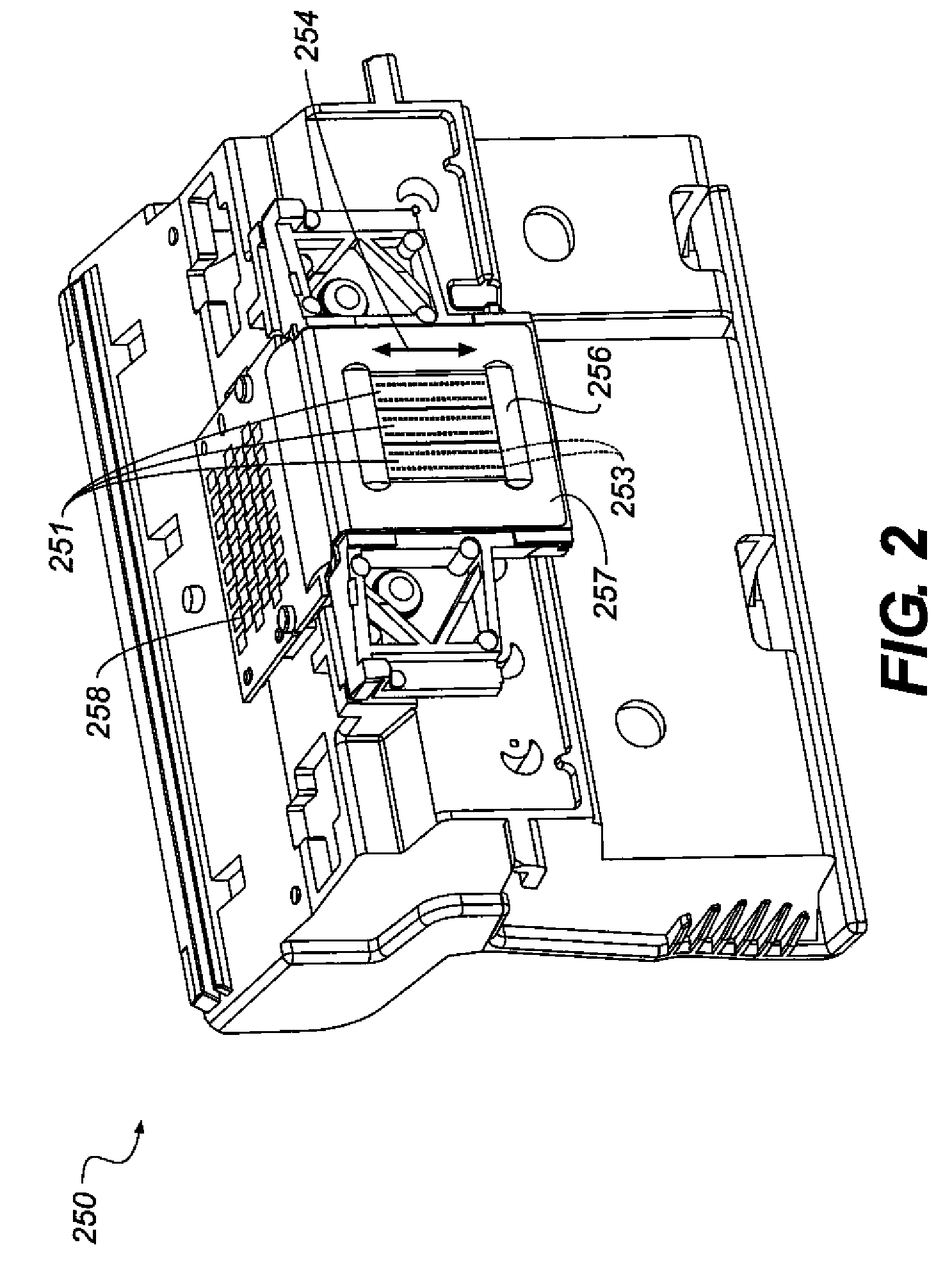Nonuniform mask circulation for irregular page advance
a non-uniform, page advance technology, applied in the direction of digitally marking record carriers, instruments, visual presentation using printers, etc., can solve the problems of no dot at all, non-uniform marking elements in a variety of ways, and high cost of a printhead that includes a page-width array of marking elements for some types of printing applications, etc., to achieve the effect of reducing banding artifacts
- Summary
- Abstract
- Description
- Claims
- Application Information
AI Technical Summary
Benefits of technology
Problems solved by technology
Method used
Image
Examples
Embodiment Construction
[0030]Referring to FIG. 1, a schematic representation of an inkjet printer system 10 is shown. Printer system 10 includes a source 12 of image data, which provides data signals that are interpreted by a controller 14 as being commands to eject drops. Controller 14 includes an image processing unit 15 for rendering images for printing, and outputs signals to a source 16 of electrical energy pulses that are inputted to an inkjet printhead 100, which includes at least one printhead die 110.
[0031]In the example shown in FIG. 1, there are two nozzle arrays. Nozzles 121 in the first nozzle array 120, having a larger opening area than nozzles 131 in the second nozzle array 130. In this example, each of the two nozzle arrays has two staggered rows of nozzles, each row having a nozzle density of 600 per inch. The effective nozzle density then in each array is 1200 per inch. If pixels on the recording medium were sequentially numbered along the paper advance direction, the nozzles from one ro...
PUM
 Login to View More
Login to View More Abstract
Description
Claims
Application Information
 Login to View More
Login to View More - R&D
- Intellectual Property
- Life Sciences
- Materials
- Tech Scout
- Unparalleled Data Quality
- Higher Quality Content
- 60% Fewer Hallucinations
Browse by: Latest US Patents, China's latest patents, Technical Efficacy Thesaurus, Application Domain, Technology Topic, Popular Technical Reports.
© 2025 PatSnap. All rights reserved.Legal|Privacy policy|Modern Slavery Act Transparency Statement|Sitemap|About US| Contact US: help@patsnap.com



